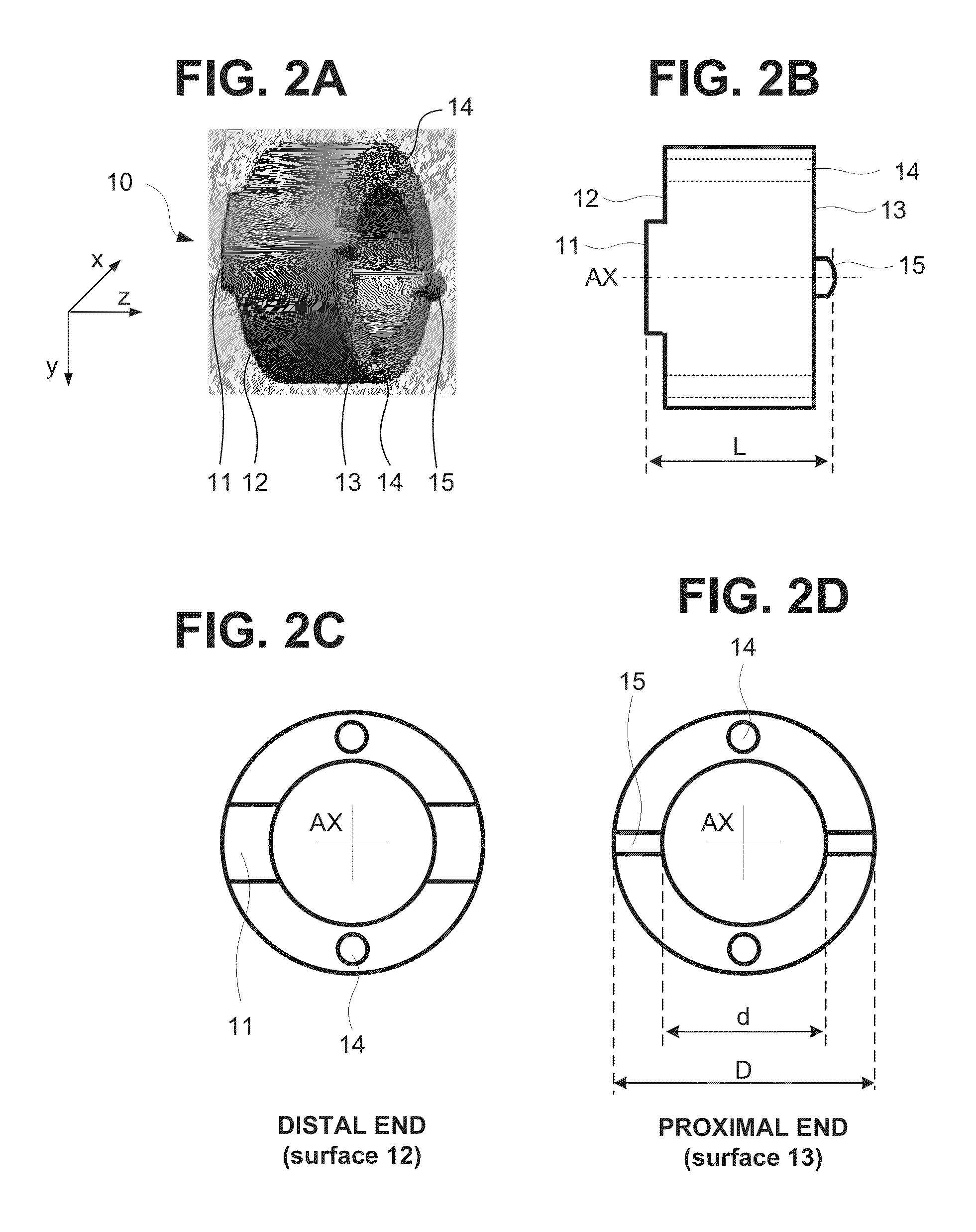Mechanical structure of articulated sheath
a technology of articulation and sheath, applied in the field of medical devices, can solve the problems of lack of dexterity and sensitivity offered to health professionals (endoscopists and surgeons) who perform endoscopic procedures, and the inability of surgeons or endoscopists to easily maneuver endoscopic tools and instruments
- Summary
- Abstract
- Description
- Claims
- Application Information
AI Technical Summary
Benefits of technology
Problems solved by technology
Method used
Image
Examples
first embodiment
[0049]FIGS. 1A through 1C illustrate an exemplary configuration of a basic mechanical structure of an articulated sheath100, in accordance with an embodiment of the present invention. As used herein, the term “basic mechanical structure” refers to a basic building block or smallest unit or sheath section of the articulated sheath 100 necessary to obtain a minimal articulation (bend) along an angle of plus / minus theta (θ) with respect to a central axis (linear axis) AX of the articulated sheath 100. As illustrated in FIG. 1A, an articulated sheath 100 includes an outer body 110 made of a plurality of node rings 10, and inner body 120 arranged inside the outer body 110, and a plurality of wires 150 passing through holes in the plurality of node rings 10.
[0050]As illustrated in FIG. 1B, the plurality of node rings 10 of the outer body 110 are stacked or arranged in series one upon another; and the wires 150 pass through holes formed in the wall of each node ring 10. In this manner, the...
numerical examples
[0087]
R=1 mm, m=0.3,
When (T / dT)=1, ε≦0.333 mm,
When (T / dT)=2, ε≦0.167 mm,
When (T / dT)=5, ε≦0.067 mm,
When (T / dT)=10, ε≦0.033 mm,
[0088]The sample values above show that smaller (T / dT) tolerates larger offset displacement ε. In other words, it is more desirable for the balancing tension of T to be as small as possible. On the other hand, in a case where an uncontrolled outside force is exerted, it is desirable to maintain the balancing tension T to be a large value to resist the outside force.
[0089]In order to bend the whole structure of sheath 100 to a small radius, the ratio T / dT is small (e.g., 2). On the other hand, in order to slightly bend the structure of sheath 100 to a large radius of curvature, the ratio T / dT is large (e.g., 10). It was observed that in order to maintain the stability of the mechanical structure under various error factors and outside forces, (T / dT) is greater or equal to 2. Thus, to maintain an stable control of sheath 100 with the efficiency of η≧90%, the fol...
PUM
 Login to View More
Login to View More Abstract
Description
Claims
Application Information
 Login to View More
Login to View More - R&D
- Intellectual Property
- Life Sciences
- Materials
- Tech Scout
- Unparalleled Data Quality
- Higher Quality Content
- 60% Fewer Hallucinations
Browse by: Latest US Patents, China's latest patents, Technical Efficacy Thesaurus, Application Domain, Technology Topic, Popular Technical Reports.
© 2025 PatSnap. All rights reserved.Legal|Privacy policy|Modern Slavery Act Transparency Statement|Sitemap|About US| Contact US: help@patsnap.com



